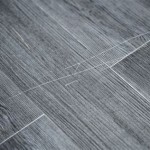Can I Use A Steam Mop On My Laminate Wood Flooring?
The question of whether a steam mop can be safely used on laminate wood flooring is a common one among homeowners. Laminate flooring, known for its affordability and ease of installation, mimics the look of hardwood but is constructed from composite materials. Understanding the properties of laminate flooring and the potential effects of steam is crucial to determining the suitability of steam mopping as a cleaning method.
Laminate flooring consists of several layers. The uppermost layer is a transparent wear layer designed to resist scratches and abrasions. Beneath this lies a decorative layer, a high-resolution image that gives the flooring its wood-like appearance. This decorative layer is adhered to a core board, typically made of high-density fiberboard (HDF) or medium-density fiberboard (MDF). The bottom layer is a balancing layer that provides stability and helps prevent warping. The integrity of these layers, and particularly the seams between planks, is key to the flooring's resistance to moisture damage.
Steam mops utilize heated water to generate steam, which is then applied to the floor surface through a mop head. The high temperature of the steam is intended to loosen dirt, grime, and bacteria, effectively cleaning the floor. However, the introduction of moisture, especially in the form of hot steam, presents a potential risk to laminate flooring. While laminate flooring is designed to be water-resistant to a degree, it is not waterproof. Excessive moisture can penetrate the seams between planks and seep into the core board, leading to swelling, warping, and ultimately, damage to the flooring.
The manufacturer's guidelines provide the most definitive answer regarding the suitability of steam mopping on a specific laminate floor. Many manufacturers explicitly advise against using steam mops, while others may allow it with certain conditions. These conditions often involve using the steam mop on the lowest setting, ensuring the mop head is not overly saturated, and quickly drying the floor after cleaning. Always consult the warranty information and care instructions provided with the laminate flooring before using a steam mop.
Understanding the Risks of Steam on Laminate
The primary risk associated with using a steam mop on laminate flooring is moisture damage. The HDF or MDF core board is particularly susceptible to absorbing water. When water penetrates through the seams or through a compromised wear layer, the core board can swell, causing the laminate planks to buckle or warp. This damage is often irreversible and can necessitate costly repairs or replacement of the flooring.
Another less immediate but equally concerning risk is the gradual degradation of the adhesive used to bond the layers of the laminate flooring. Repeated exposure to heat and moisture can weaken these adhesives over time, leading to delamination, where the layers separate from each other. Delamination can manifest as bubbling or peeling of the decorative layer, significantly diminishing the aesthetic appeal of the flooring.
Furthermore, using excessive steam can also damage the finish on the laminate flooring. While the wear layer is designed to be durable, prolonged exposure to high heat and moisture can dull the finish, making the floor appear faded or worn. This can be particularly noticeable in areas with high foot traffic.
Factors to Consider Before Using a Steam Mop
Several factors should be carefully considered before deciding to use a steam mop on laminate flooring. Firstly, the age and condition of the flooring are important. Older laminate floors may have compromised seams or wear layers, making them more vulnerable to moisture damage. Similarly, floors that have already sustained minor water damage are likely to be further damaged by steam cleaning.
Secondly, the quality of the laminate flooring plays a significant role. Higher-quality laminate flooring typically has a thicker wear layer and more robust construction, making it more resistant to moisture penetration. Cheaper laminate flooring may have a thinner wear layer and a less dense core board, increasing the risk of damage from steam cleaning.
Thirdly, the frequency of steam mopping is a crucial consideration. Even if the manufacturer permits occasional steam cleaning, frequent use can increase the risk of moisture damage over time. It is generally advisable to limit steam mopping to only when necessary and to use alternative cleaning methods for regular maintenance.
Finally, the specific features and settings of the steam mop itself matter. Steam mops with adjustable steam settings allow for greater control over the amount of moisture applied to the floor. Using the lowest steam setting and ensuring the mop head is not overly saturated can help minimize the risk of damage. It is also important to use a microfiber mop pad, which is more absorbent and less likely to leave excess moisture on the floor.
Alternative Cleaning Methods for Laminate Flooring
Given the potential risks associated with using steam mops on laminate flooring, it is prudent to consider alternative cleaning methods that are less likely to cause damage. One of the most effective and safest methods is dry mopping or sweeping the floor regularly to remove dust, dirt, and debris. This prevents the buildup of grime that requires more aggressive cleaning methods.
For more thorough cleaning, a damp mop can be used with a pH-neutral laminate floor cleaner. Ensure the mop is only slightly damp, not wet, and wring it out thoroughly to remove excess water. Avoid using harsh chemicals, abrasive cleaners, or concentrated detergents, as these can damage the wear layer and dull the finish of the laminate flooring.
Another effective cleaning method is using a spray mop with a microfiber pad. Spray the cleaning solution directly onto the floor, rather than soaking the mop pad. This allows for better control over the amount of moisture applied to the floor. Wipe the floor in sections, using a clean, dry microfiber cloth to remove any excess moisture.
For stubborn stains, a spot cleaning approach is recommended. Apply a small amount of laminate floor cleaner directly to the stain, let it sit for a few minutes, and then gently wipe it away with a clean, damp cloth. Avoid scrubbing vigorously, as this can damage the wear layer of the flooring. Always test the cleaning solution in an inconspicuous area first to ensure it does not discolor or damage the flooring.
Regular maintenance, including prompt cleanup of spills and the use of doormats to prevent dirt and debris from being tracked onto the floor, can significantly reduce the need for more intensive cleaning methods. By following these preventive measures, the lifespan and appearance of the laminate flooring can be preserved.
In conclusion, while steam mops can be effective cleaning tools, their use on laminate flooring requires careful consideration and adherence to manufacturer's guidelines. The potential risks of moisture damage, delamination, and finish degradation should be weighed against the benefits of steam cleaning. Alternative cleaning methods, such as dry mopping, damp mopping, and spot cleaning, offer safer and equally effective ways to maintain the cleanliness and appearance of laminate floors.

Can You Damage Your Floor With A Steam Mop

Can You Use A Steam Mop On Laminate Floors The Queen

Can You Use A Steam Mop On Hardwood Risky Flooring Tips Reallyfloors America S Est

Can I Use A Steam Mop On My Hardwood Floor Ambience Flooring

Can You Damage Your Floor With A Steam Mop

Can You Use A Steam Mop On Hardwood Risky Flooring Tips Reallyfloors America S Est

Boiling Water And Steam Mops Can Cause Serious Damage For Wood Vinyl Laminate Express Co

Can You Use A Steam Mop On Laminate Floors Bis Cleaning Wood

How To Clean Laminate Flooring Factory Direct

Deep Cleaning Your Laminate Floors A Step By Guide
Related Posts








